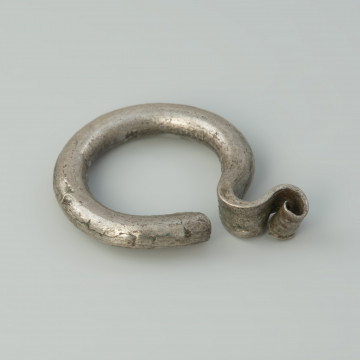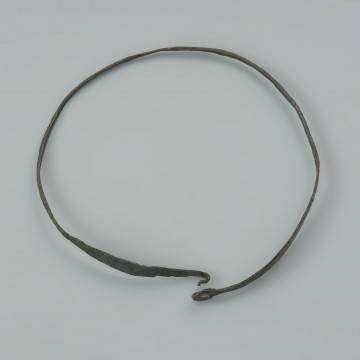
Silver necklace
966 — 1100
National Museum in Szczecin
Part of the collection: Middle Ages
The silver bead is an element of a hoard discovered in 1900 while clearing trees in a roadside forest between the villages of Laska and Dramino, in Kamieński district. The hoard dates to the period after 950. The bead of silver plate consists of two symmetrical segments. Its surface is decorated with the so-called filigree – a goldsmithing technique, which entails decorating the surface of an object with thin wires – smooth or twisted around their own axis, as well as narrow ribbons obtained by flattening the wire with a hammer. In many cases, filigree was used with fine metal granules. Filigree and granulation were used to decorate pendants of various types, as well as beads and earrings. Metal beads were rarely used as a sole decoration, usually they were used as elements of necklaces made up of several or more beads, as well as other materials, such as glass, and with pendants of different types. Beads made of solid metal sheets and openwork beads made of wires were also used as elements of earrings. In addition to two-segment beads, we can also distinguish biconical, oblong, so-called raspberry beads, tubular, corncob-shaped and round ones.
Ewa Górkiewicz-Bucka
Author / creator
Dimensions
cały obiekt: height: 2.4 cm, width: 1.8 cm
Object type
bead, jewellery
Technique
granulation, filigree, soldering, forging
Material
silver
Origin / acquisition method
legal transfer
Creation time / dating
Creation / finding place
Owner
Muzeum Narodowe w Szczecinie
Identification number
Location / status

966 — 1100
National Museum in Szczecin

1055 — 1100
National Museum in Szczecin

901 — 1100
National Museum in Szczecin
DISCOVER this TOPIC
Museum of King Jan III's Palace at Wilanów
DISCOVER this PATH
Educational path